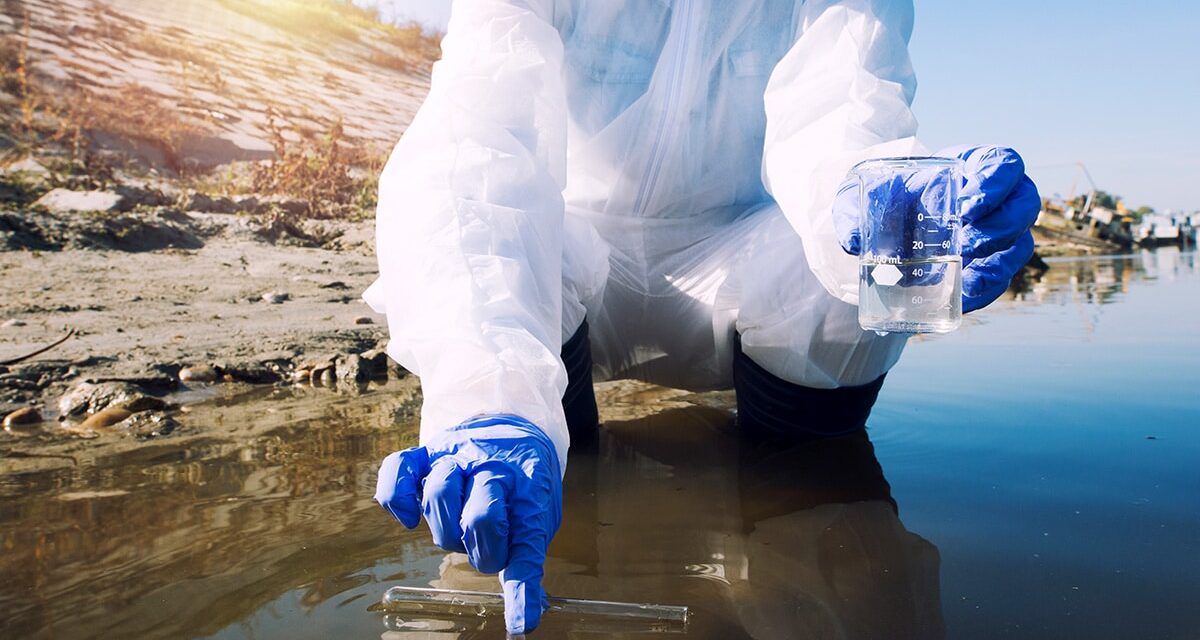 Introduction
Introduction
According to Government Regulation No. 19 of 1999 on Control of Marine Pollution and/or Destruction as amended by Government Regulation No. 22 of 2021 on Implementation of Environmental Protection and Management (“PP 22/2021”).
Environmental Pollution is defined as the incoming or inclusion of creature, substances energies and/or other components into the environment by human activities so as to exceed the stipulated environmental quality standard.1
In this regard to Environmental Pollution, one form of environmental pollution that often occurs is marine pollution and/or damage.
The sea is the water space on the face of the earth that connects the land with land and other natural forms, which is a geographical and ecological unit and all related elements, and whose boundaries and systems are determined by statutory regulations and international law.2
Seawater Quality Standard is a measure of the limits or levels of living things, substances, energy, or components that exist or must be present and/or pollutant elements whose presence is tolerated in seawater.3
Marine Pollution is the entry or inclusion of living things, substances, allergies, and/or other components into the Marine environment by human activities so that the quality drops to a certain level which causes the Marine environment to no longer be in accordance with the Seawater Quality Standards.4 Meanwhile, Marine Damage is a direct and/or indirect change to the physical, chemical, and/or biological characteristics of the Sea that exceeds the predetermined standard damage criteria.5
Environmental policies are made and implemented based on legal provisions or statutory regulations.6 Environmental policy is a state or government policy in the environmental field. The policy has specific goals and objectives and how and by what means environmental management is carried out to achieve these goals and objectives.7
Law Number 32 of 2009 on Protection and Management of the Living Environment (UUPPLH) is a policy to further guarantee legal certainty and provide protection for everyone’s right to a good and healthy environment as part of protecting the entire ecosystem.8
Enforcement of environmental law as an act and/or process of coercion to comply with the law based on provisions, laws and regulations and/or environmental requirements.9 It is the observation of environmental law through supervision and inspection as well as through detection of law violations, restoration of environmental damage and action against the manufacturer (offender).10
This article discusses the enforcement and protection of the law against marine pollution and marine damage. The important things studied from this article are the criteria against marine pollution.
Marine Pollution Criteria
Based on the explanation of Article 1 number 60 PP 22/2021, a marine pollution is the entry of living things, substances, energy, and/or other components into the marine environment by human activities so that the quality drops to a certain level which causes the marine environment to be unsuitable with Seawater Quality Standards.
The Seawater Quality Standard itself has criteria as described in the attachment to the Decree of the State Minister for the Environment No. 51 of 2004 on Seawater Quality Standards as amended by Decree of the State Minister of the Environment Number 179 of 2004 on Amendments to the Decree of the State Minister of the Environment Number 51 of 2004 on Seawater Quality Standards. That is, if it exceeds the listed load and results in a decrease in the quality of sea water, then it can be categorized as polluted sea water.
The enforcement and legal protection in cases of marine pollution
Enforcement and protection in cases of marine pollution is very important, especially for coastal communities who are mainly fishermen. This article will discuss the Tanjung Pinang District Court Decision No. 26/PDT.G/2009/PN.TPI (“Environmental Dispute”).
- Background of the case:
- The Plaintiff represented by the fishermen and the Senggarang community which uses the class action lawsuit procedure argued that there had been sea polution as a result of mining activities and dock filling carried out by Defendant I, II and III (company doing activities).11
- The Plaintiff argued that the Defendant IV, V, and VI (related environment governmental agency) have been negligent in carrying out supervision and prevention of mining activities carried out by Defendant I, II, and III.12
- The bauxite mining carried out by Defendants I, II and III produced hazardous and toxic waste materials which flowed into the sea due to rain and the rupture of the red earth embankment towards the sea resulting in the death of fish, shrimp and marine habitat which is the work location of fishermen and plaintiffs.13
- Panel of Judges Consideration
The Panel of Judges concluded in the Environmental Dispute, the principle case against the Environmental Dispute:14
“Defendant I’s carrying out bauxite mining activities, Defendant II who built a pier for the port to transporting the bauxite that produced by Defendant I, and Defendant III who made their own port for loading and unloading bauxit mining. Whereas, Defendants IV, V and VI as government agencies that related in the field of permits and supervision have been negligent in carrying out their main duties and functions. Thus, the actions of those Defendants caused huge losses to the Plaintiffs because they were unable to catch fish and shrimp which are their main livelihood.”
The Panel of Judges concluded in the Environmental Dispute that the Defendants had fulfilled the elements of committing an unlawful act as stipulated in Article 1365 of the Civil Code, which will be discuss as follows:
1. There is an act that violates the law:
Based on the evidence from laboratory test result submitted by the Plaintiffs it has been proven that the consequences of bauxite mining, the environmental quality of the waters of Los Island, Senggarang Village, no longer meets the water quality standards for fish farming.15
Due to the embankment for holding waste from the washing of bauxite belonging to the Defendant I it leaked 2 times so that the bauxite waste flowed into the sea and Defendants II and III had piled up the beach for the construction of a stock pile dam (bauxite hoarding) by stockpiling using soil originating from bauxite that juts out into the sea.16
Then, from the description of the incidents, the actions of the Defendants conflicted with the rights of the Plaintiffs in earning a living as fishermen.17
2. There was an error on the part of the perpetrator:
From the evidence and witness testimony presented by the Plaintiff, it was found that there was an error from the defendant, namely regarding the bauxite waste processing embankment belonging to Defendant I had broken 2 (two) times and for the Ports owned by Defendants II and III when there was a wave of high tide or low tide and rain, causing the surrounding sea water turned cloudy red colour. Because it was mixed with piled up soil originating from the Port owned by Defendant III.18
Therefore, according to the panel of judges argue that the Defendant I had violated the applicable provisions, where the Defendant I had been negligent to safeguard the waste treatment embankment, including, Defendant II and Defendant III in making the port did not take into account the impact of environmental damage which would result in pollution of sea water, in which case Defendant II and Defendant III had neglected to make a permanent barrier.19
According to the Panel of Judges, the Defendants I, II and III in carrying out their activities did not comply with applicable regulations, causing sea water to turn cloudy and polluted.20
3. There is a loss for the victim:
Defendant I in making an embankment for collecting bauxite waste was not permanent but only in the form of an embankment which was made a kind of reservoir and likewise Defendants II and Defendant III did not make a permanent barrier, for example in the form of sloping stones between the pile of land and sea level, causing sea water to turn into murky and polluted sea around the Los Straits, thus causing the plaintiffs who daily earn a living as fishermen in the area to suffer losses due to reduced income.21
4. There is a causal relationship between actions and losses
Defendant I who carried out Bauxite Mining activities which had an embankment for Bauxite Waste Reservoir which was only in the form of an embankment so that it was broken 2 times which resulted in bauxite waste flowing into the sea waters of the Los Strait and the actions of Defendants II and Defendants III who made a port by installing bollards wood along the harbour as a barrier to piles of material without making a permanent barrier in the form of sloping stones, so that the pile of bauxite soil makes the sea water turn cloudy and its particles contain hazardous and toxic materials which result in polluted sea waters of the Los Straits and damage to the environment.22
Based on the evidence submitted by the Plaintiff which were laboratory tests of water samples taken from three points in the sea waters of the Los Straits, it showed that the compounds present in these waters were too high, which exceeded the Seawater Quality Limit standards and caused marine pollution, which results in disrupting the survival of marine biota.23
From laboratory tests, the following results were obtained:
- There are five parameters that do not meet the water quality standards for fish farming, namely Cadmium (Cd), Lead (Pb), Aluminum (Al), Nickel (Ni) and DO (dissolved oxygen).24
- Cu exceeds Environmental Quality Limits, Al is very high, turbidity exceeds Environmental Quality Standards, Cd, Sn, Fe, Mgn Tss and Nitrate are below environmental quality standards.25
Based on the above consideration, the Panel of Judges has decided as follows:
- Defendants I, II, and III have committed unlawful acts and marine pollution that harm the Plaintiffs, so that it becomes the obligation of Defendants I, II, and III to compensate for losses arising from these actions.26
- The amount of compensation to be paid by Defendants I, II, and III jointly and severally to the Plaintiffs based on the calculation of the average daily income of the Plaintiffs for a period of 1 year is Rp. 10.760.000.000,- (ten billion seven hundred and sixty million rupiah).27
The Panel of Judges decided to grant the plaintiff claim in part, stating that the Defendant had committed an Unlawful Act and punished the Defendants jointly and severally to pay compensation directly.28
In the Supreme Court Decision No. 2749 K / Pdt / 2012, the Panel of Judges considered several things, as follows:
In the Supreme Court Decision, the Panel of Judges rejected the cassation request filed by the Defendants, in which case the Panel of Judges upheld the decision at the District Court and High Court.
The Panel of Judges only provides improvements to the immaterial compensation order on the grounds that it was not based on sufficient evidence.29
Closing
Whereas, this case example shows the existence of protection and legal certainty for victims who experience losses from Marine Pollution, the Panel of Judges in the Environmental Dispute uses Article 1365 of the Civil Code and the Attachment of the Decree of the State Minister for the Environment No. 51 of 2004 on Sea Water Quality Standards as amended by Decree of the State Minister of the Environment Number 179 of 2004 on Amendments to the Decree of the State Minister of the Environment Number 51 of 2004 on Seawater Quality Standards in the Tanjung Pinang District Court Decision No. 26/PDT.G/2009/PN.TPI as a basis for proving the existence of environmental pollution.
Thus, in the cases of marine pollution exceeding the listed load in the Sea Water Quality Standards becomes crucial in order to prove whether or not marine pollution has occurred in an Environmental Dispute.
Aji Kadhasnah Putera
Sources
- Article 1 Number 28 of GR 22/2021
- Article 1 Number 55 of GR 22/2021
- Article 1 Number 57 of GR 22/2021
- Article 1 Number 60 of GR 22/2021
- Article 1 Number 61 of GR 22/2021
- Dr. H. Prim Haryadi, S.H., M.H., Penyelesaian Sengketa Lingkungan Melalui Gugatan Perdata, page. 84
- Muhammad Akib, Hukum Lingkungan Perspektif Global dan Nasional, page 12-13.
- Alvin Syahrin, Beberapa Isu Hukum Lingkungan Kepidanaan,page 7
- Ibid
- Mas Achmad Santosa, Good Governance Hukum Lingkungan, page 234
- Tanjung Pinang District Court Decision Number No. 26/PDT.G/2009/PN.TPI, page. 1-3
- ibid
- Tanjung Pinang District Court Decision Number No. 26/PDT.G/2009/PN.TPI, page. 9-10
- Tanjung Pinang District Court Decision Number No. 26/PDT.G/2009/PN.TPI, page. 116
- Tanjung Pinang District Court Decision Number No. 26/PDT.G/2009/PN.TPI, page. 118
- ibid
- Ibid
- Tanjung Pinang District Court Decision Number No. 26/PDT.G/2009/PN.TPI, page. 119
- Tanjung Pinang District Court Decision Number No. 26/PDT.G/2009/PN.TPI, page. 119
- ibid
- Tanjung Pinang District Court Decision Number No. 26/PDT.G/2009/PN.TPI, page. 120
- Tanjung Pinang District Court Decision Number No. 26/PDT.G/2009/PN.TPI, page. 120-122
- Tanjung Pinang District Court Decision Number No. 26/PDT.G/2009/PN.TPI, page. 121-122
- Tanjung Pinang District Court Decision Number No. 26/PDT.G/2009/PN.TPI, page. 117
- Tanjung Pinang District Court Decision Number No. 26/PDT.G/2009/PN.TPI, page. 121
- Tanjung Pinang District Court Decision Number No. 26/PDT.G/2009/PN.TPI, page. 124
- Tanjung Pinang District Court Decision Number No. 26/PDT.G/2009/PN.TPI, page. 125
- Tanjung Pinang District Court Decision Number No. 26/PDT.G/2009/PN.TPI, page. 128
- Ibid




